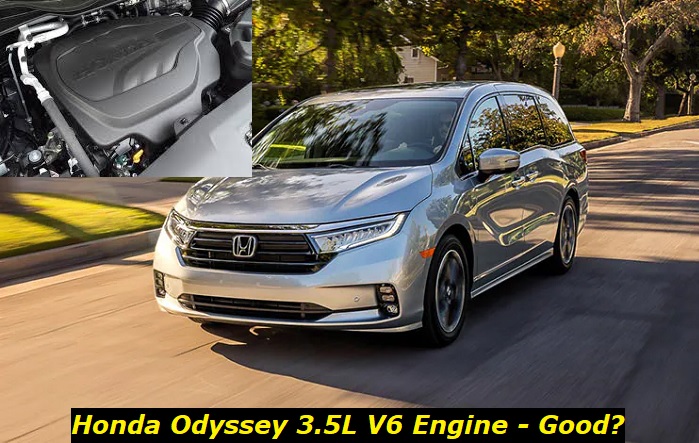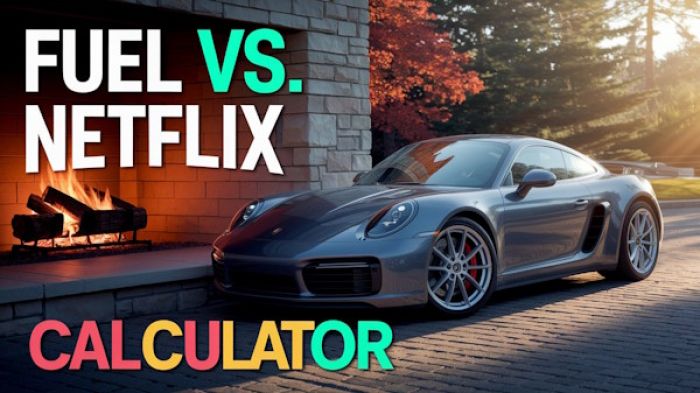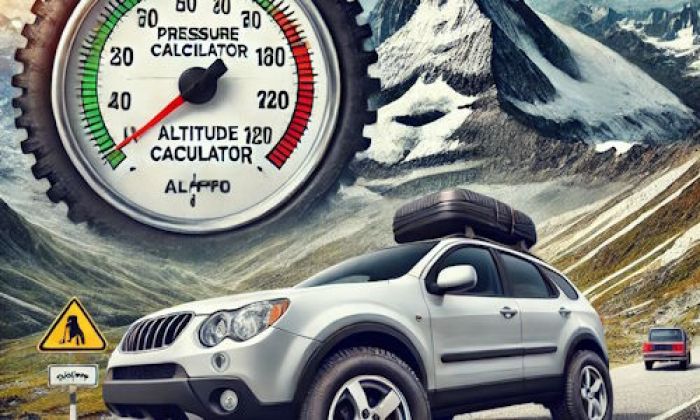The new Honda Odyssey offers incredible advantages for families. This is a reliable and long-lasting vehicle with wonderful comfort and cool driving. The minivan offers a great combination of durability and fun driving. In its good years, it sold over 170,000 vehicles a year in the US. Now, it sells up to 50,000 units a year but still remains one of the most prominent minivans in its class.
Today, I will tell you more about the only available 3.5L V6 J35Y6 engine in the Honda Odyssey. Is it worth the money? Is it actually good and reliable for everyday driving? I will touch on some of the important topics that will help you understand if this engine is actually good for you. Please keep in mind that I will focus on reports and problems, but I don't want you to think that the engine is bad because it's actually much above average.

Key features and my opinion about the engine
- Production years:2015-2020
- Average lifespan of J35Y6:220,000-240,000
- Fuel supply type:direct injection
- Power range:280-290 hp
- Fuel efficiency:average
- Engine block material:aluminum
- Engine reliability score:high
- The most common problems:VCM oil leaks, throttle contamination, carbon buildup on intake valves, engine belt premature failure.
What should you know about the engine in the Honda Odyssey?
The Odyssey offers only one engine option in the US now. This is the legendary 3.5L V6 Honda engine codenamed J35Y6. The engine has been there since 2015 and it was installed in several Honda and Acura models like Passport, Pilot, Ridgeline, and Odyssey in the US, and also the Acura TLX.
There aren't really many engines like this on the market today. But Honda still tries to keep the V6 available. Yes, it has some disadvantages like bad gas mileage, but this engine is going to last twice as much as a modern turbocharged 4-cylinder machine with small displacement and dozens of doubtful technologies.
Here's what I can tell you about the 3.5L V6 in the Odyssey:
- the engine is the 3.5-liter 6-cylinder non-turbocharged machine offering 280 horsepower and 262 lb-ft of torque;
- the engine belongs to the legendary J-Series made by Honda since 1996, technologies are all traditional and very reliable;
- the engine is equipped with the 10-speed automatic transmission - not a bad choice with really flexible gears and good smooth work;
- the engine has the VTEC (variable valve timing) on intake valves only and it engages in high revs, so basically it doesn't bother you most of the time;
- also, this engine has the VCM technology that turns off several cylinders when the load on the engine is low (on highways, for example);
- the engine is direct injection, so it will have some problems with injectors and also intake valves because of carbon buildup;
- these engines have a timing belt which is pretty predictable but still should be replaced on time to avoid problems;
- you can get about 19 MPG in the city and up to 28 MPG on highways which is not great but still acceptable.
With the limited amount of modern technologies, this engine seems to be much more reliable than the majority of modern powerplants offered on the market. It still comes with its pinch of salt but from what we know about it now, the engine is absolutely not bad. It can offer really fun driving and even owning a minivan can be exciting for you as a driver.
I don't think Honda will update its V6 engines significantly and the J-Series is certainly living its last years. It means that if you still want to own this machine, you should make the decision now. Maybe, the new generation of the Odyssey will only have some turbo engines just like the CR-V, for example.
How long will the J35Y6 engine last in the Odyssey?
Well, it will last long. I haven't heard a single case that this engine died earlier than it reached 300,000 miles, so I suppose the average expectation will be at 250,000 miles. You can drive it even more if you are ready to invest some money in the transmission and some other modules and units.
The engine itself is close to immortal. Unfortunately, there are still some technologies that will make you pay for repairs and inspections regularly. But some VCM failures, for example, won't kill the engine if addressed properly.
There is a limited number of things that can actually kill the engine. It will live even in bad conditions and with poor service, but if you want to get this engine up to 250,000 miles and maybe even beyond, you should concentrate on high-quality maintenance.
What are the common problems with the Odyssey engine?
So, the J35Y6 engine has more or less the same common issues as other J-Series engines. It has several technologies that will obviously malfunction before the engine reaches 100K miles and they can be pretty hard to repair and even inspect. So, I wouldn't say that the engine is really problem-free.
Here are some of the common problems you will have to cope with during its life:
1. Carbon buildup you should clean
At 50K miles, you may notice that the engine burns more gas than usual and its efficiency dropped. It may mean that the engine has carbon buildup on the intake valves. In most cases, you will need to pay professionals who will clean this buildup. This is just a common problem for all direct injection engines.
If not cleaned, the buildup will keep on developing and will obviously make the engine work worse. After some time, you will not be able to start the engine and drive it because of the wrong valve position.
2. VTEC problems
Usually, after the engine reaches 100,000 miles, it starts throwing problems with variable valve timing. It means that the solenoids need cleaning or replacement. It may happen earlier than usual just because of poor maintenance. The VTEC system relies on high-quality oil. If the oil is contaminated, the solenoids quickly get clogged and stop working.
Even though VTEC kicks in over 5000 RPM only in these engines, it still needs proper maintenance and attention. If the solenoids are clogged or stuck, the engine will work harshly and consume much more fuel than it should.
3. VCM issues
Variable cylinder management turns on and off some cylinders when needed. It means that the system may deactivate some cylinders and then fail to activate them back when needed. Of course, this doesn't usually happen with fresh engines. The problems develop after the engine reaches 100,000 miles or more.
Here's the bad news: repairing and even inspecting the VCM system is pretty hard and expensive. Also, this system can develop bad oil leaks that are hard to locate and repair. One solution is to deactivate the system. But the unit is still there and can leak some oil even when deactivated.
4. Premature timing belt failure
The OEM Honda timing belt will go precisely as many miles as stated by the manufacturer. But after the belt reaches its limits, it can just break. The broken belt will result in bent valves, damaged pistons, and also a stuck head or other problems with the engine.
Repairing the 3.5L V6 engine in the Odyssey after belt failure is not something you will want to do because it will cost you a fortune. I even know the case when the engine was replaced after the event of timing belt failure.
Of course, this is quite unusual for the belt to brake but if you don't replace it on time, the chances are very high that it will not survive. You should replace the belt along with the pulley and also with the water pump.
How can you prolong the life of the V6 engine in the Odyssey?
Well, there isn't much you can do because its lifespan is not that short initially. But you can do a lot of things to kill the J35Y6 engine prematurely. So, your main focus will be to avoid things that can kill this J35Y6 engine sooner than it should naturally die.
Here are some ideas:
- maintain the engine regularly - every year or every 10-15 thousand miles;
- use OEM parts at all times when it is possible;
- choose professional and trusted mechanics or go to the dealership for maintenance and repair;
- avoid aggressive driving - this is the engine for the family vehicle, not for a racing car;
- change transmission fluid when needed - you will anyway need to repair the transmission at least once within the engine's life;
- notice any leaks and immediately react - have the engine inspected to find the reason for the leaks.
Now you know that the 3.5L V6 engine in the new Honda Odyssey is not bad at all. Yes, it still has some disadvantages and weak technologies, but it's much better than the majority of other available engines in minivans in the US. If you still have any specific questions about the powerplant, please ask them in the comments below.
About the authors
The CarAraC research team is composed of seasoned auto mechanics and automotive industry professionals, including individuals with advanced degrees and certifications in their field. Our team members boast prestigious credentials, reflecting their extensive knowledge and skills. These qualifications include: IMI: Institute of the Motor Industry, ASE-Certified Master Automobile Technicians; Coventry University, Graduate of MA in Automotive Journalism; Politecnico di Torino, Italy, MS Automotive Engineering; Ss. Cyril and Methodius University in Skopje, Mechanical University in Skopje; TOC Automotive College; DHA Suffa University, Department of Mechanical Engineering






Add comment